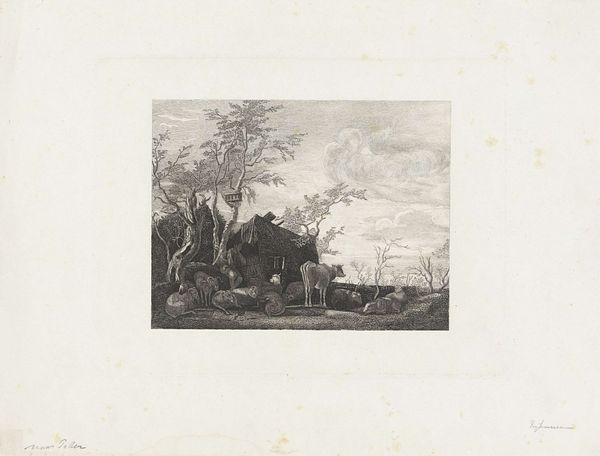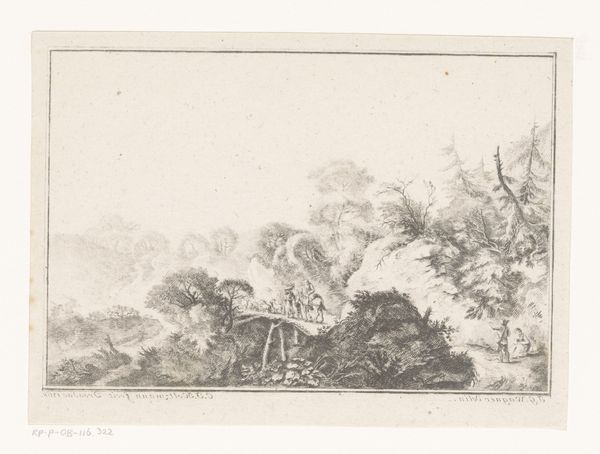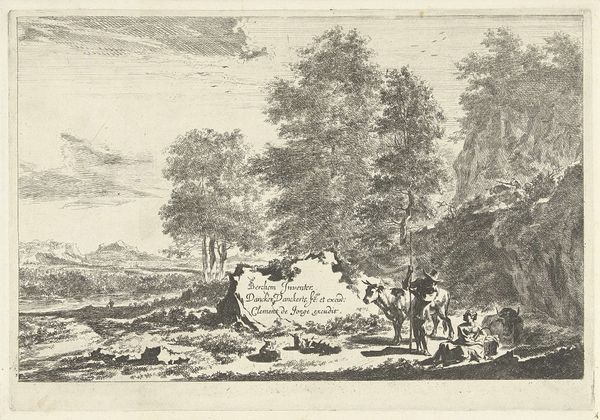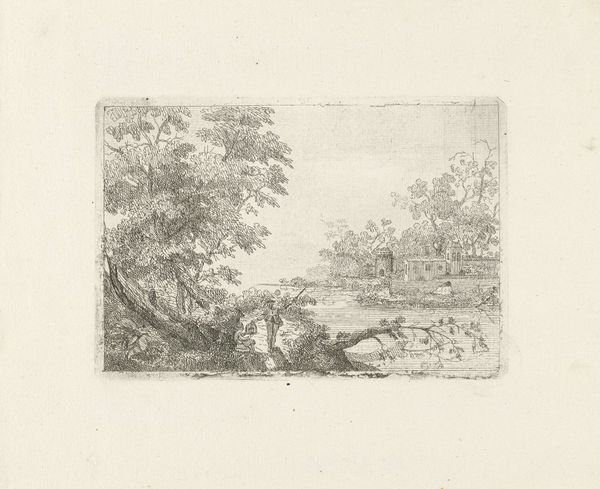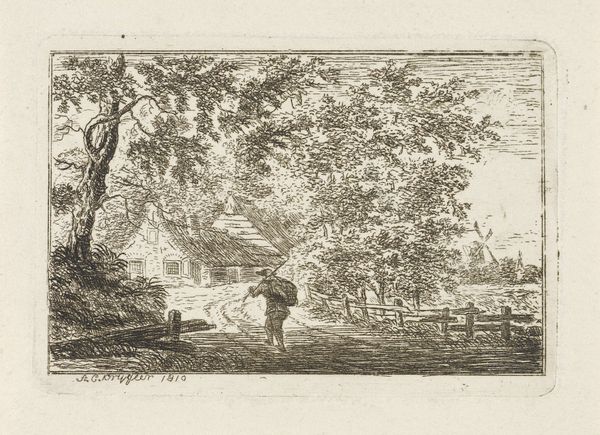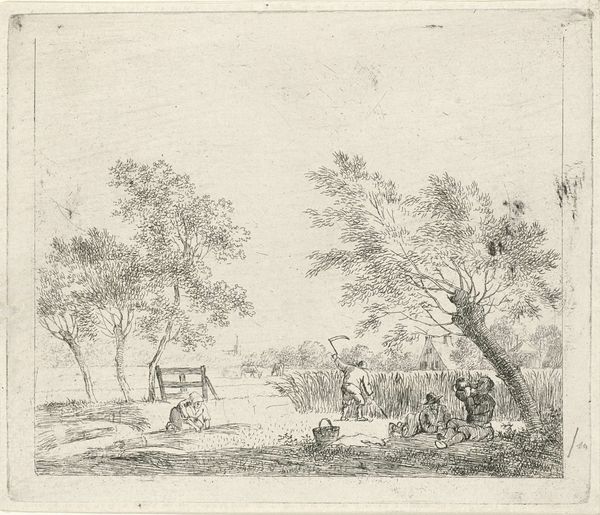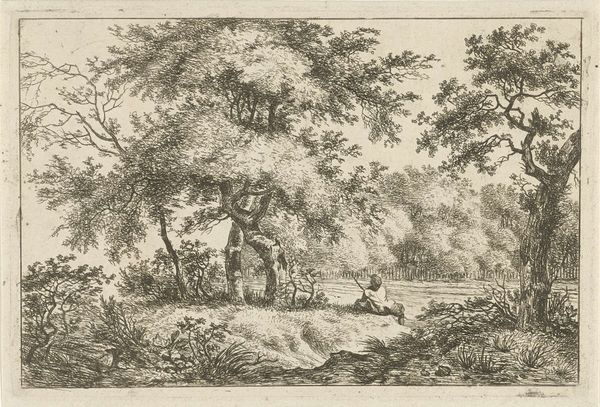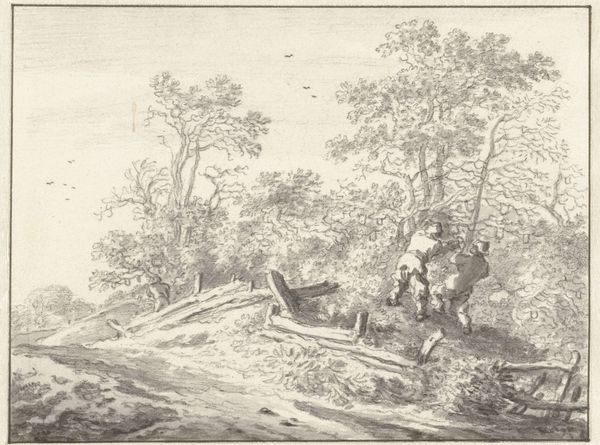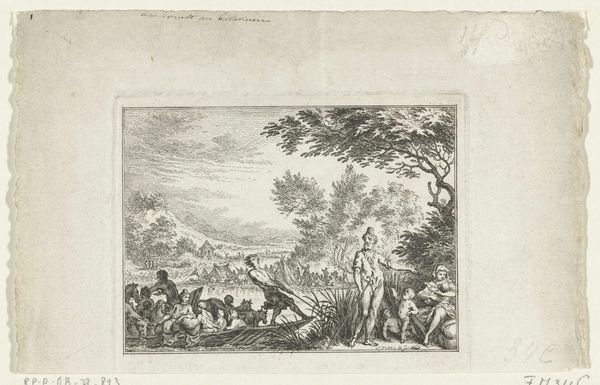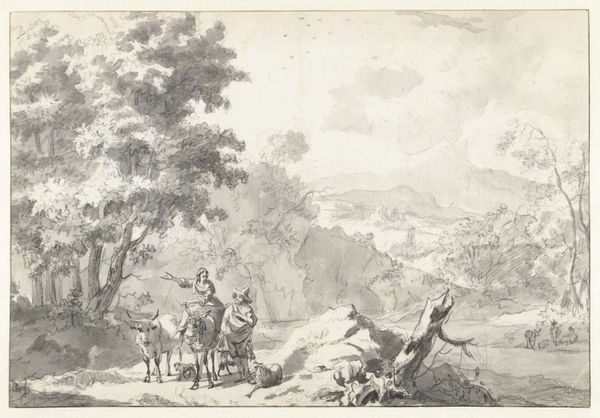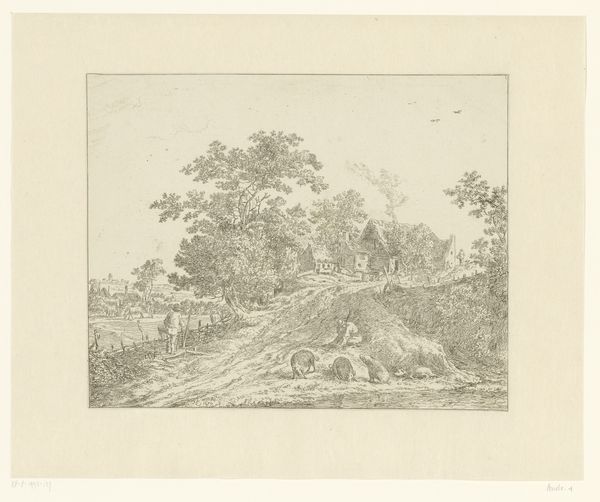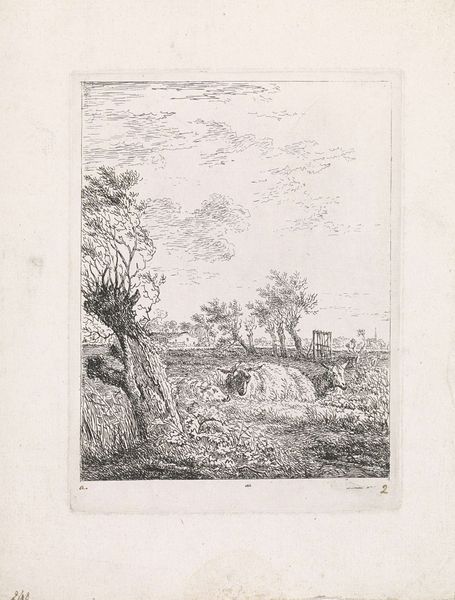
print, etching, engraving
#
narrative-art
# print
#
etching
#
old engraving style
#
landscape
#
etching
#
history-painting
#
engraving
Dimensions: height 140 mm, width 170 mm
Copyright: Rijks Museum: Open Domain
Curator: Look at this print, “Sint Eustatius door de Fransen heroverd, 1781,” which roughly translates to Saint Eustatius retaken by the French. It's by Mathias de Sallieth, dating to about 1787. It depicts a key moment in that era. What catches your eye first? Editor: Well, it’s mostly in grays. All those tiny, frantic lines give the whole thing an energetic yet anxious mood. Almost like historical stage fright. Curator: Yes, I feel that too. The etching technique, with all its detail, does make it incredibly vibrant. Considering Sint Eustatius, a Dutch island, was a major trading hub, that level of action and disruption rings true. Note the tiny soldiers near the fortifications, the detail given to them is very compelling. Editor: Absolutely. Look at the fort in the background, exploding with cannon fire, a visual metaphor for the whole colonial power game playing out at that time. So, the symbols are very loud—the fort for Dutch power and its violent end when it switches hands back to the French. Curator: Exactly. What I find interesting is how the figures are presented almost as archetypes rather than portraits of real people. Look at the men on horseback at the front right of the piece. It feels almost performative, their moment of power re-emphasized. Editor: Power embodied. They are definitely placed with great intention. They certainly reflect a romantic view of combat and power. Curator: And perhaps that’s part of the message, or at least the appeal to audiences in 1787. Capturing not just history, but how they want to remember history, full of spectacle. Editor: That's the crux of it, isn't it? How art shapes memory, crafting these enduring symbols of conflicts. Curator: Yes, and by visually re-narrating conflicts of the day the artwork allows audiences a chance to reimagine the future of power, memory, and ultimately history. Editor: It also allows for further inquiry, doesn't it? Now I am very intrigued about how and when the Dutch got it back from the French. Curator: A very excellent question. And who knows? Perhaps in asking questions like these about an etching from almost two and a half centuries ago we may actually reimagine a different and hopefully more peaceful future.
Comments
No comments
Be the first to comment and join the conversation on the ultimate creative platform.
